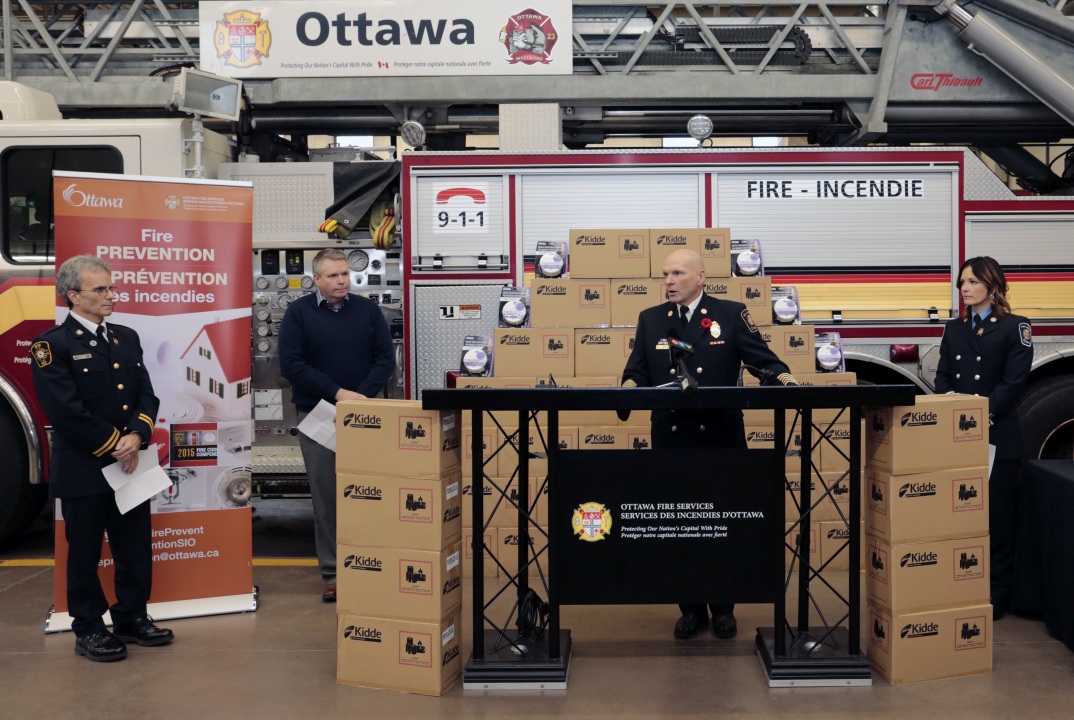
Nov. 7, 2019, Ottawa – Enbridge Gas and Ottawa Fire Services have announced they are working together to bring fire and carbon monoxide-related deaths down.
Ottawa Fire Services received 726 combination smoke and carbon monoxide alarms through Project Zero, a public education campaign that will provide more than 9,100 alarms to residents in 40 municipalities across Ontario.
This year, Enbridge Gas invested $275,000 in Project Zero, and over the past 11 years, the program has provided more than 44,356 alarms to Ontario fire departments.
“Carbon monoxide is known as the ‘silent killer’ for a reason, and we have proof that prevention saves lives. We know that the best way to avoid carbon monoxide exposure is to eliminate it at the source by properly maintaining fuel-burning equipment, and that the alarms are a critical second line of defence to protect against carbon monoxide poisoning,” said Ian Ross, Director, Eastern Region Operations, Enbridge Gas in a news release.
“The objective of Project Zero is to deliver combination smoke and carbon monoxide alarms to Ontario communities who need them the most,” said Jon Pegg, Ontario Fire Marshal and Chief, Emergency Management in a news release. “It’s a program that municipal fire departments can adopt to help educate their communities about the requirement for all Ontario homes to have a CO alarm if they have a fuel burning appliance or an attached garage.”
“These alarms, when properly installed and maintained, help provide the early warning needed to safely escape from a house fire or carbon monoxide exposure,” said Ottawa Fire Chief Kim Ayotte in a news release. “This type of initiative is an excellent complement to our bi-annual Wake Up program, and I encourage every Ottawa resident to install and maintain their alarms.”
This year, prevention officers from Ottawa Fire Service will distribute the donated alarms to seniors and vulnerable occupants through various public education presentations and initiatives.
Print this page
